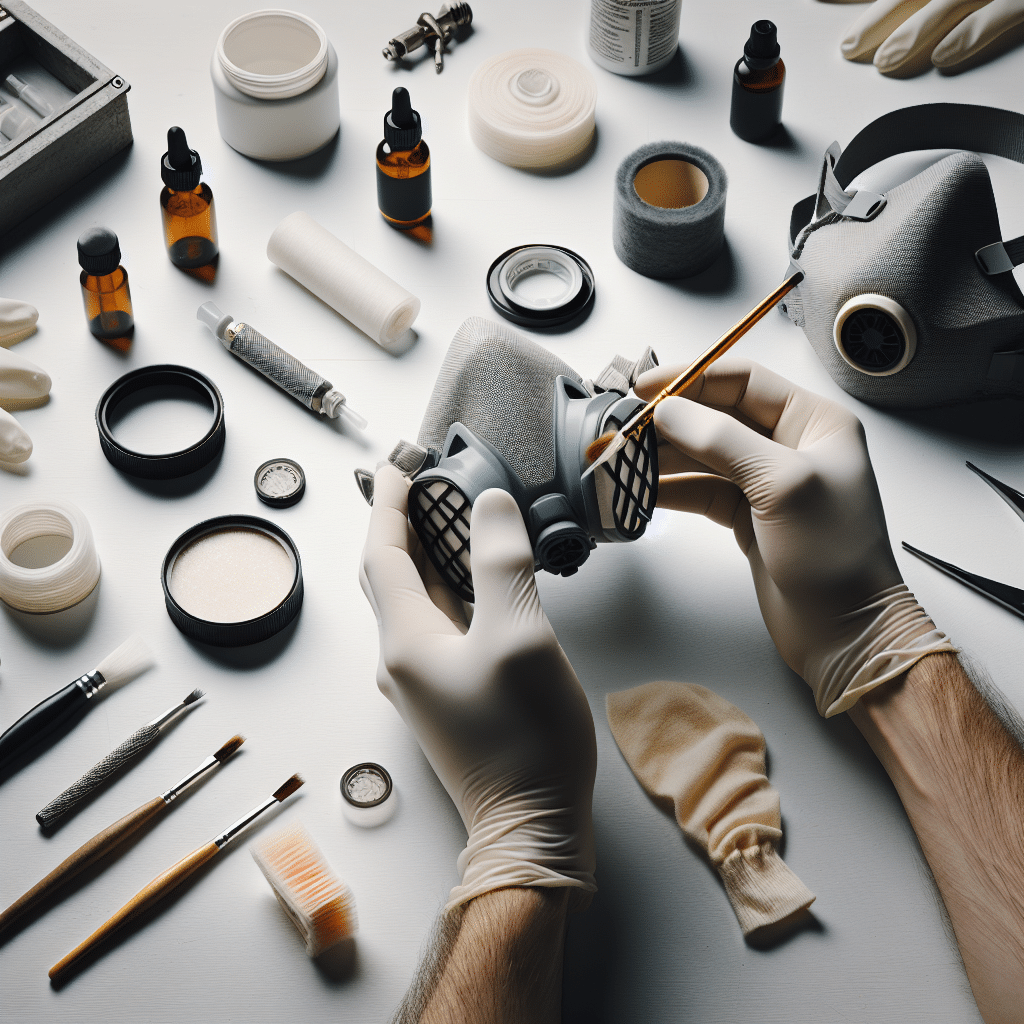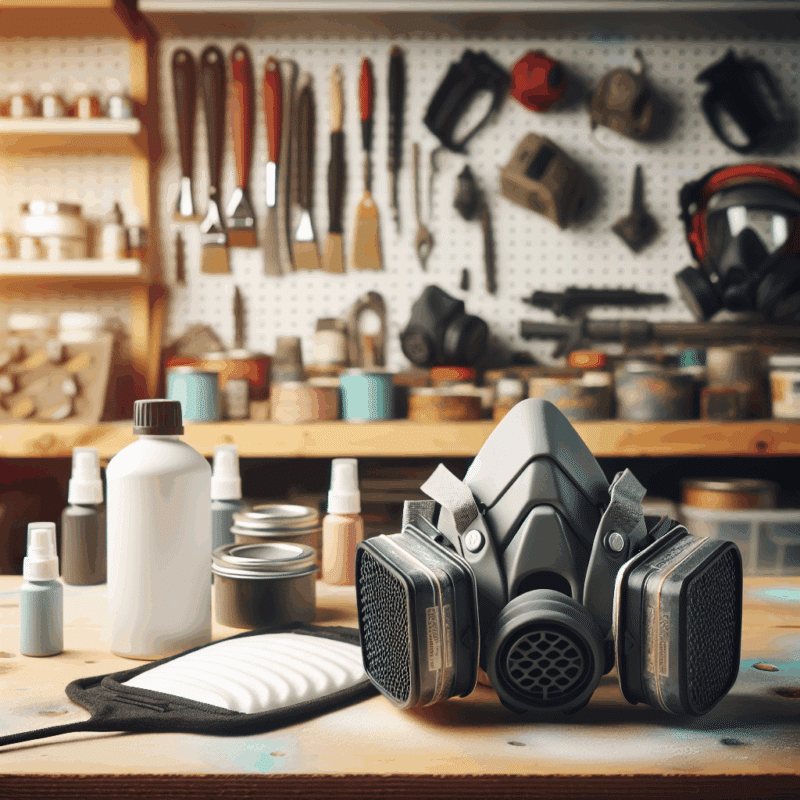How to Check ProDefend Odour Breakthrough on Resin Projects
In This Article
- Prodefend odour breakthrough occurs when carbon filters can no longer trap VOCs effectively.
- Recognising early signs — like odour, dizziness, and discomfort — is vital for safety.
- Regular filter inspection and replacement schedules are non-negotiable.
- Proper mask fit and storage significantly extend filter life and mask efficacy.
- Always dispose of used VOC filters through environment-safe channels.
What Is Odour Breakthrough in Resin Work?
Understanding VOCs and Filter Saturation
In the context of resin work, the term prodefend odour breakthrough refers to the point at which your respirator’s filter, particularly the carbon component, becomes saturated and no longer effectively absorbs odorous volatile organic compounds (VOCs). When saturation occurs, the wearer can suddenly or gradually detect resin odours despite wearing a mask, indicating compromised protection.
Volatile organic compounds are commonly released during the curing process of various resins, including epoxy, polyester, and polyurethane types. These VOCs don’t just smell strongly – they are hazardous to inhale and can cause respiratory irritation, headaches, and even long-term damage with sustained exposure.
In theory, a filter fitted with activated carbon should adsorb these VOCs efficiently, preventing them from entering the user’s breathing zone. However, once the carbon reaches its capacity, the VOCs begin to permeate through the filter media – a clear sign your protective gear is no longer functioning as intended.

How ProDefend Filters Handle Resin Fumes
Carbon Filtration Against Odorous Compounds
ProDefend filters are engineered using high-grade activated carbon and particulate capture media to defend users against resin-related hazards. The multilayer design efficiently tackles odorous VOCs while also blocking harmful particulates produced during resin sanding, grinding, or formulation mixing activities.
Activated carbon, known for its vast internal surface area, physically adsorbs odour molecules and VOCs as air flows through the filter. ProDefend filters optimise this process through a proprietary carbon loading method that increases VOC retention. This means fewer interruptions to your workflow and longer usability compared to generic filters.
As long as the carbon remains unsaturated, it efficiently traps toxic molecules. However, as filter saturation approaches, a prodefend odour breakthrough can strike with little warning, introducing unwanted odours into the mask seal and effectively rendering the mask ineffective against fumes.
“Once you can smell the resin while wearing your ProDefend mask, your filter has already begun to fail. Always act at the first whiff.”
5 Signs of Breakthrough You Should Never Ignore
Recognising a prodefend odour breakthrough is essential for maintaining safe working conditions. Here are five clear indicators your filter has reached its limit:
- Sudden detection of resin smell: If you catch even a faint whiff of resin while masked, assume the filter is compromised.
- Headaches or nausea: Early symptoms of VOC exposure may indicate your respirator is no longer effective.
- Prolonged filter usage: Even if you don’t notice an odour, extended use beyond manufacturer recommendations increases risk.
- Environmental changes: Warmer or more humid environments can degrade filters faster, leading to quicker breakthrough.
- Change in breathing resistance: A clogged particulate layer may force more VOCs through partly effective carbon, exacerbating breakthrough.
Step-by-Step: Checking Your Mask for Breakthrough
To proactively prevent a prodefend odour breakthrough scenario, it’s vital to perform a quick check before every use:
- Inspect the filter: Look for discolouration, dust overload, or damage, particularly around the seal.
- Perform seal check: Cover the filter inlets and inhale gently—no air should leak around the mask edges.
- Pre-use sniff test: Without exposing yourself to heavy fumes, check if the mask already carries a resin odour. If it does, the filter may have residual VOCs, a warning sign.
- Simulate exposure: Hold the mask near an open resin container for a few seconds and immediately wear it — if you detect any odour, replace the filter.
How Often Should You Change a ProDefend Filter?
There’s no universal lifespan for a ProDefend filter, as saturation timing depends on resin type, project duration, and ambient VOC concentrations. Still, general guidelines can help regulate safe usage:
- Light users (1–2 hours/week): Change filters every 4–6 weeks.
- Moderate users (4–6 hours/week): Replace filters every 2–3 weeks.
- Heavy users (daily handling): Inspect filters weekly and replace every 5–7 working days.
Always prioritise the first odour indication over time because waiting for the schedule to run out might already be too late. Remember, odour detection is not a false alarm—it’s a direct message from your gear.
Safety Checklist for Resin Hobbyists and Professionals
Whether you’re a weekend caster or a full-time resin technician, adopting a consistent checklist can ward off unsafe exposure:
- Perform daily equipment checks before starting any resin-related project.
- Ensure work areas are adequately ventilated at all times.
- Store ProDefend masks in airtight containers when not in use.
- Never reuse filters marked for single use or post-breakthrough.
- Keep spare filters on hand to incentivise timely replacements.
- Consult Learn more about Respiratory Protection for Resin and VOC Work for ProDefend guidelines on filter cycling.
Best Practices for Mask Fit During Resin Jobs
Even the most advanced ProDefend filters cannot protect you from VOCs if the mask is improperly fitted. Here’s how to ensure a secure, odour-proof seal:
First, select the correct mask size using ProDefend’s sizing chart. A mask that fails to cover chin, cheeks, and nasal bridge comfortably will allow VOCs to seep in. Next, adjust the harness straps for a snug fit without discomfort. Always perform a negative-pressure seal test before use.
Moreover, avoid facial obstructions such as beards or makeup as these break the integrity of the mask’s seal. Replace worn-out silicone seals or cracked plastic components as they increase risk of prodefend odour breakthrough.
Tips to Extend Life of Your Respirator Filter
While ProDefend filters are designed for maximum efficacy, proper care can extend their longevity without compromising utility:
- Store filters in an airtight bag or container away from direct sunlight and moisture.
- Avoid leaving filters in high-humidity areas like basements or near open resin containers.
- Create a rotating filter schedule if working daily to prevent cumulative saturation.
- Label filters with usage dates to detect overuse.
Additionally, track environmental contributors. High VOC concentrations or poor ventilation will accelerate saturation, requiring faster changeouts.
Common Mistakes That Lead to Breakthrough
Many resin users unintentionally hasten filter failure through novice errors. Recognising these pitfalls could save your health:
- Delaying filter replacement: Ignoring minor odour hints often leads to prolonged exposure.
- Improper storage: Leaving ProDefend masks in open areas exposes filters to ambient VOCs, even when not in use.
- Using expired gear: Outdated filters often have degraded carbon efficiency.
- Inaccurate filter selection: Not all filters block resin-specific VOCs—always verify compatibility before usage. See Read a related article for resin-specific filter guides.
Tools to Help You Monitor Filter Saturation
Technology can play a huge role in managing your workflow and protection levels. Consider adopting these solutions:
- Saturation detection stickers: These attach to the filter and change colour once certain VOCs are present above threshold levels.
- Wearable air quality monitors: Measure associated particle and VOC counts in real-time, alerting you when filters should be replaced.
- ProDefend mobile app (beta): Tracks usage and offers alerts on projected saturation dates for select filter models.
- Analytical VOC pens: Though costly, these can test filters onsite for residual saturation levels.
Real User Experiences with ProDefend Filters
Users across industries consistently report high satisfaction with ProDefend products – but only when filters are properly maintained. For example, one jewellery caster wrote, “After 40 hours working with UV resin, the odour reappeared and headaches followed. Swapped out the ProDefend filter — instant difference.”
Another reviewer described trusting their ProDefend filter across four months of weekly resin casting before noticing a slight smell. They replaced the filter pre-emptively and avoided any further symptoms. These testimonials reinforce a central theme: don’t ignore breakthrough indicators. See more feedback and usage stats on removing odours using industrial resins.
How to Dispose of Saturated VOC Filters Safely
Once a filter shows signs of prodefend odour breakthrough, it must be disposed of correctly to avoid polluting the environment or posing risks to others. Never discard saturated VOC filters in household rubbish—especially where plastics or flammable waste is stored.
Instead, check with your local hazardous waste disposal authority for VOC handling guidelines. Seal the used filter in a puncture-resistant bag and clearly mark it. In industrial environments, ProDefend-compatible methods include incineration under licensed facilities or recycling through authorised safety suppliers. For more details, visit EU 2025 product safety regulation updates.
Conclusion: Don’t Ignore What Your Mask Is Telling You
[CONCLUSION_CONTENT]
The moment you sense a prodefend odour breakthrough, your health is already at risk. Filters do not offer infinite protection — they must be monitored, replaced, and respected for the safety tools they are. By incorporating regular checks, timely replacements, and secure fits, you’ll significantly reduce your exposure to resin fumes. Trust your senses, follow the data, and never ignore what your mask is telling you.
Great guide on check-prodefend-odour-breakthrough-resin-jobs-guide – Community Feedback
How do I know if ProDefend filter breakthrough has occurred?
If you start to notice resin or chemical odours inside your mask or experience irritation, this suggests ProDefend breakthrough—meaning the filter is saturated and should be replaced.
How often should ProDefend filters be changed when working with resin?
Change ProDefend filters immediately if you detect odours, or according to the manufacturer’s recommended hours of use, whichever comes first for maximum protection.
What are the signs of improper mask fit during resin jobs?
Signs include strong odours inside the mask, fogging, air leaks, and a loose or uncomfortable fit. Always perform a seal check before each use.





